Peoria Audubon Society is a local affiliate of both:
National Audubon Society & Illinois Audubon Society
Illinois Natural History Survey

Dr. Jeff Hoover:
Warbler Research in Southern Illinois
Study shows that warblers provide link between behavioral ecology and conservation biology
One of the field trips during the Illinois Audubon Society 2009 Spring Gathering was in the watershed of the Cache River State Natural Area.
Members on the "birding by canoe" trip, had the good fortune of coming across Dr. Jeff Hoover, of the Illinois Natural History Survey, as he was conducting research on “Behavioral Ecology and Conservation Biology” by studying the Prothonotary Warbler. With an avid group of birders, “circling around” in our canoes, we enjoyed an ad hoc field lecture on his research.
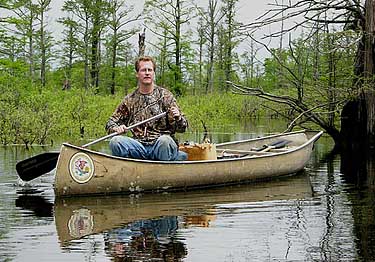
Dr. Hoover explained that the Prothonotary Warbler is a migratory songbird that winters in the Neotropics (Central America to northern South America) and breeds in forested wetlands throughout parts of the eastern half of the United States.
This species is territorial during the breeding season, nests in secondary cavities and nest boxes, and prefers to nest over standing water in bottomland and swamp forests – a strategy that minimizes predation, primarily from raccoons. Dr. Hoover explained that Prothonotary Warblers are also easy to capture, individually mark, follow for an entire breeding season, and relocate in subsequent years.
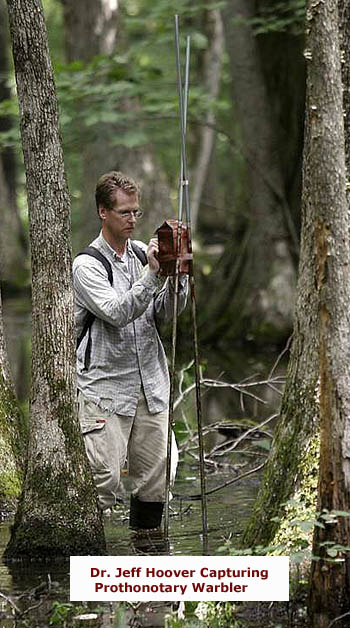
This study is allowing researchers to gain a better understanding of some of the most important yet poorly-known aspects of migratory songbird behavior and the profound effects on the population dynamics.
With his graduate students, Dr. Hoover’s team has studied Prothonotary Warblers in this area of southern Illinois since 1994. They presently have over 1,500 established nest boxes established that spread over 20 locations. To date his team has:
· Monitored over 6,000 nesting attempts
· Color-banded 1000 adult warblers,
· Banded nearly 8,000 warbler chicks.
By experimentally improving nesting success for some pairs of warblers but not others, the team has demonstrated that individual male and female Prothonotary Warblers decide whether or not to return to sites within the Cache River watershed based on their reproductive performance.
· Individuals that produce two batches (broods) of offspring in a breeding season returned to the same habitat patch the following year at a rate of 80%.
· Individuals producing one brood returned at a rate of 50%
· Only 25% of those producing no offspring returned the next year.
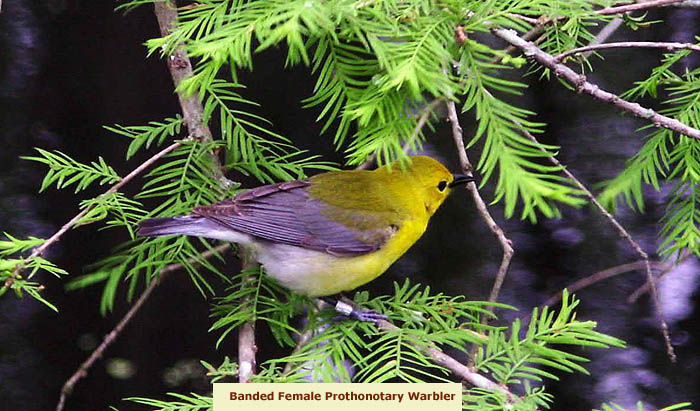
Dr. Hoover joked that birds are a lot smarter than many people give them credit. He used the example that some people may to refer to other people as having a “bird-brain.” This may be considered a compliment. Consider that warblers are smart enough to use their own nesting success on returning to a good site and to avoid returning to the bad ones.
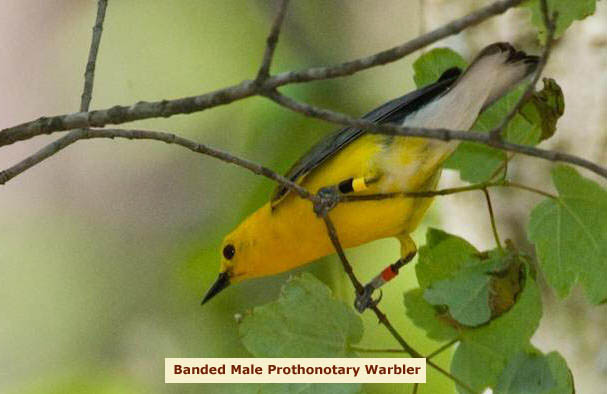
These “decision rules” lead to increased densities of warblers on good sites. The presence of many returning adult birds to a site may indicate to new birds that it is good-quality breeding habitat; much in the same way that a crowded restaurant likely indicates to passers-by that the food is good there.
The results of this initial study provided a link between behavioral ecology and conservation biology by showing the inter-connections between the habitat and the behavior of the warblers. Habitat fragmentation and the degradation of bottomland forest ecosystems may have increased raccoon densities (the primary nest predator), and may also have affected water level fluctuations. These factors appear to influence raccoon movements and rates of nest predation. Thus, the nesting successes of the Prothonotary Warblers are influenced; and the subsequent return of warblers between years.
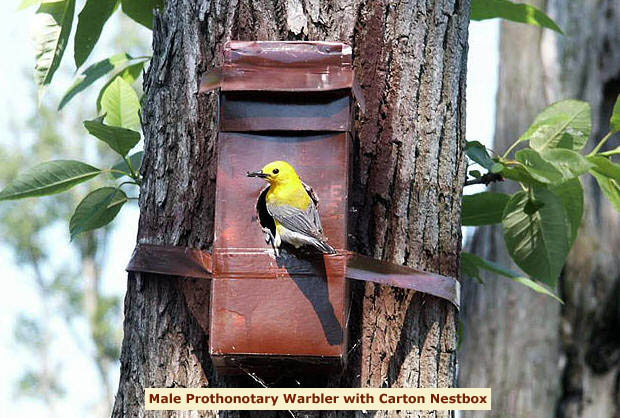
The research indicates that by consolidating forests and managing hydrology in forested wetlands (maintaining deep water during the breeding season), local populations of warblers will thrive and be highly productive.
This study also helped address questions from researchers and conservation practitioners who had wondered if the birds that did not return were dead or if they migrated to other locations. During the past 15 years, Dr. Hoover and his team banded >8,000 Prothonotary Warbler nestlings. In subsequent ears, they searched for banded warblers to gather information on population dispersion. The team expanded their search to include other appropriate habitat, up to 25 miles away from the primary study sites.
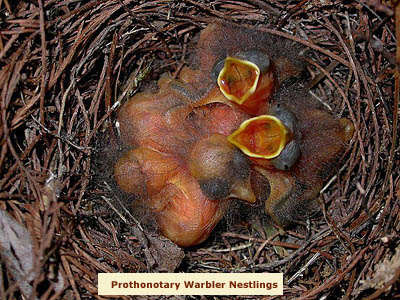
To date, over 500 warbler nestlings have returned to breed. The vast majority (>80%) of returning nestlings breed within 2 miles of where they fledged. Of the over 3,500 breeding adult warblers captured 12 – 25 miles away from the study area, not a single one was previously banded. In short, birds that fledged in the Cache area return to the Cache area.
The great resource management implication of these results are that local conservation efforts, which improve nesting success (e.g., land acquisition, restoration, consolidation of forests, managing water levels), will benefit local population dynamics and provide an even greater benefit to the local bird community.
The Peoria Audubon Society wishes to thank Dr. Jeff Hoover and the Illinois Natural History Survey for sharing these late-breaking highlights with their on-going research.
Images and data used by permission of Dr. Jeff Hoover; All Rights Reserved
